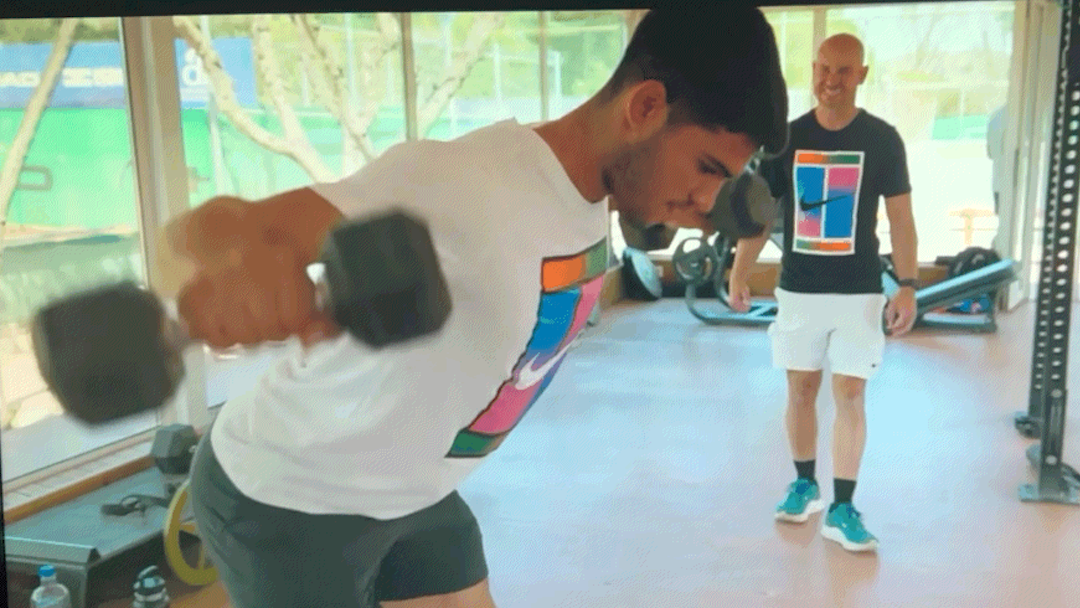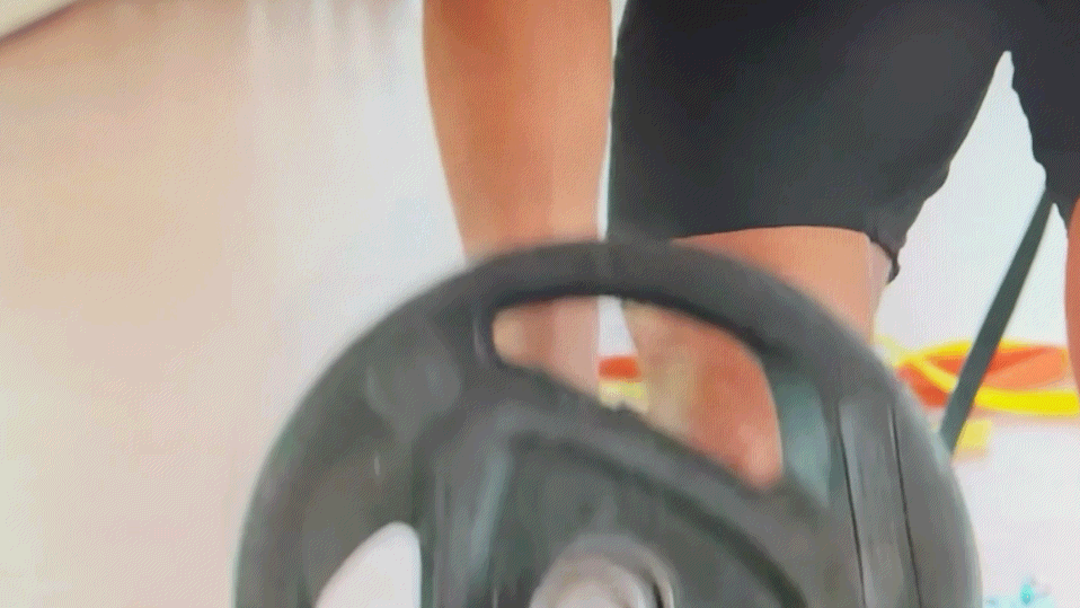This week’s training technique demonstrated by Greek tennis player Maria Sakkari sparks a philosophical debate. In S1 E3 of the Netflix docuseries “Break Point,” she is seen performing barbell squats with six Olympic-sized weight plates. Tennis players should consider including squats as a part of their off-court training program. However, there are multiple variations to consider.
As an aside, I tried to figure out how much weight Sakkari had on the bar for her squat. Unfortunately, only two of the six plates used the Olympic color scheme that is used in competition. The bright colors provide a visual way for spectators and judges to verify the weight lifted during the competition. The yellow plates on each end are 35 pounds.
The four additional black plates are anybody’s guess because that is not a part of the Olympic color scheme. However, I am told that the bumper plate order usually places heavier weights on the inside. The next size up is 45 pounds. That would put the total weight Sakkari is seen squatting at 260 pounds when the weight of the bar is added in.
This is a good time to remind everyone that this site does not recommend doing many of Sakkari’s training techniques without first consulting your doctor. You also need to work under the supervision of a well-qualified personal trainer.
In general, squats are good for tennis because they build the muscles in the legs required for explosive power. That translates to big first steps toward the ball and is essential for rapid change in direction. It is especially key for vertical mobility, i.e., jumping to reach higher shots. It can also contribute to a higher strike point when serving.
The heavy-weight barbell squats that Sakkari is performing are best for building increased strength and power in the leg muscles. However, these require serious gym equipment and the assistance of a personal trainer. Improper form in this exercise can lead to injury.
Squats using lighter weights can be done with dumbbells or kettlebells. While this targets the same muscles, the benefit to performance is more toward endurance and conditioning. It enhances rather than builds explosive power. Stamina and the ability to replicate power moves over the course of a long match is essential. Moderate weights in this exercise are great for tennis players.
Squats using only body weight can also be beneficial. It is a great way to learn the proper form for squats. It is also good for muscle activation and warming up. Depending on the player’s baseline level of fitness, squats without weights may build explosive power, but the gains are constrained by the player’s body weight.
The reality is that tennis players should use a combination approach, performing squats using some combination of body weight and moderate weights. A player would have to be pretty fit and at the upper echelons of the performance continuum before the benefits of seriously heavy weights are worth it. Most of us have less intense things to add to our fitness routines before power barbell squats are necessary.
As impressive as Sakkari’s (maybe) 260-pound squats are, football players and powerlifters still might make fun of a tennis player in the gym. As a point of reference, the average NFL lineman can squat at least 500 pounds. Of course, Sakkari is doing that lift with a considerably smaller body, so it is still impressive.
The last time I checked, protecting the “blind side” is not a tennis-specific functional skill.



